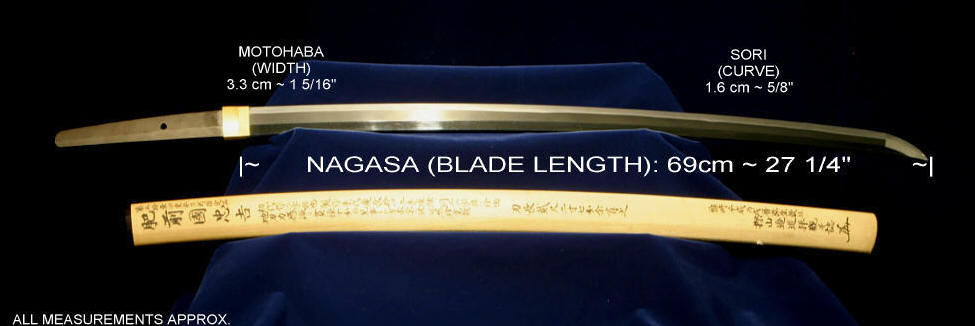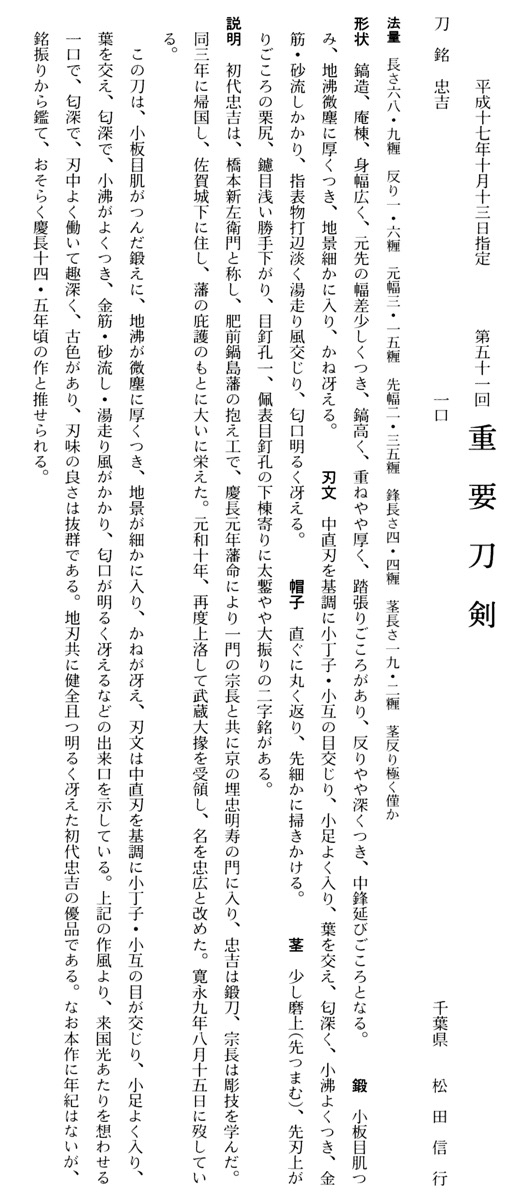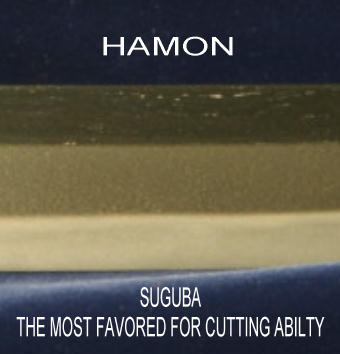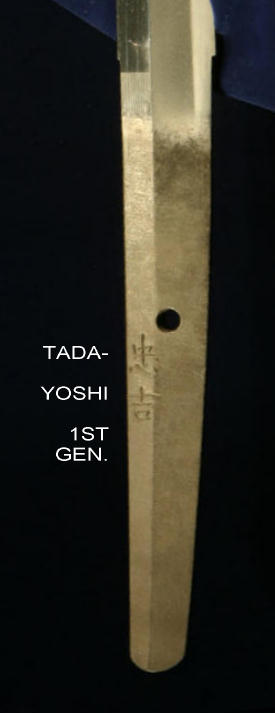Gallery Page (Display Only)
1st Generation Hizen Tadayoshi
Student of Umetada Myoju
Sword maker to the Nabeshima family
Circa 1610 AD.
One of the top ten most famous and highly rated makers of the entire Shinto period
Juyo token by the NBTHK
saya-gaki by TANZAN, Tanobe Michihiro sensei
Jūyō-tōken at the 51st jūyō shinsa held on October 13, 2005
katana, mei: Tadayoshi (忠吉)
Chiba Prefecture, Matsuda Nobuyuki (松田信行
Measurements
nagasa 68.9 cm, sori 1.6 cm, motohaba 3.15 cm, sakihaba 2.35 cm, kissaki-nagasa 4.4 cm, nakago-nagasa 19.2 cm, only very little nakago-sori
Description
Keijō: shinogi-zukuri, iori-mune, wide mihaba, slightly noticeable taper, high shinogi, relatively thick kasane, some funbari, rather deep sori, somewhat elongated chū-kissaki
Kitae: dense ko-itame that features plenty of ji-nie and fine chikei, the steel is clear
Hamon: ko-nie-laden chū-suguha-chō with a wide, bright, and clear nioiguchi and mixed with ko-chōji, ko-gunome, many ko-shi, yō, kinsuji, sunagashi, and along the monouchi of the sashi-omote side with some faint yubashiri-like elements
Bōshi: sugu with a maru-kaeri and fine hakikake at the tip
Nakago: slightly suriage, just the tip was cut off and reshaped into a kurijiri that tends to ha-agari, gently slanting katte-sagari yasurime, one mekugi-ana, the haki-omote side bears below of the mekugi-ana and towards the back of the tang a thick and relatively largely chiseled two-character signature
Explanation
The first generation Tadayoshi’s real name was Hashimoto Shinzaemon (橋本新左衛門). He was working for the Nabeshima fief (鍋島藩) in Hizen province and in Keichō one (慶長, 1596), the fief ordered him and his student Munenaga (宗長) to proceed to Kyōto to study with master Umetada Myōju (埋忠明寿); Tadayoshi to refine his sword making and Munenaga his engraving of horimono. Tadayoshi returned to Hizen in Keichō three (1598) where he took residence in the castle town of Saga (佐賀) and where he received patronage from the fief. This is where he and his lineage greatly flourished thereafter. In Genna ten (元和, 1624), he returned to Kyōto to receive the honorary title Musashi Daijō (武蔵大掾) whereupon he changed his name from Tadayoshi (忠吉) to Tadahiro (忠広). He died on the 15th day of the eighth month of Kan’ei nine (寛永, 1632).
This blade shows a densely forged ko-itame that features plenty of ji-nie and fine chikei. The steel is clear and the hamon is a ko-nie-laden chū-suguha-chō with a wide, bright, and clear nioiguchi that is mied with ko-chōji, ko-gunome, many ko-ashi, yō, kinsuji sunagashi, and yubashiri-like elements. This interpretation aims at Rai Kunimitsu (来国光), and with its wide nioiguchi, its abundance of tasteful hataraki, and its classical approach, the ha is of a truly outstanding quality. Both ji and ha of this masterwork by the first generation Tadayoshi are bright and clear and perfectly healthy (kenzen). Although the blade is not dated, the signature style places it around Keichō 14 and 15 (慶長, 1609~1610).
This Sword is not available for purchase.
If you wish to purchase a Japanese Sword, please view our Nihonto for sale page or contact us directly via email or by telephone at 1(608) 315-0083 any time. Please include specifics of what you seek, i.e.: Katana, maker, era, price range, etc.
Pictures and content may not be copied without the express permission of samuraisword.com ©









